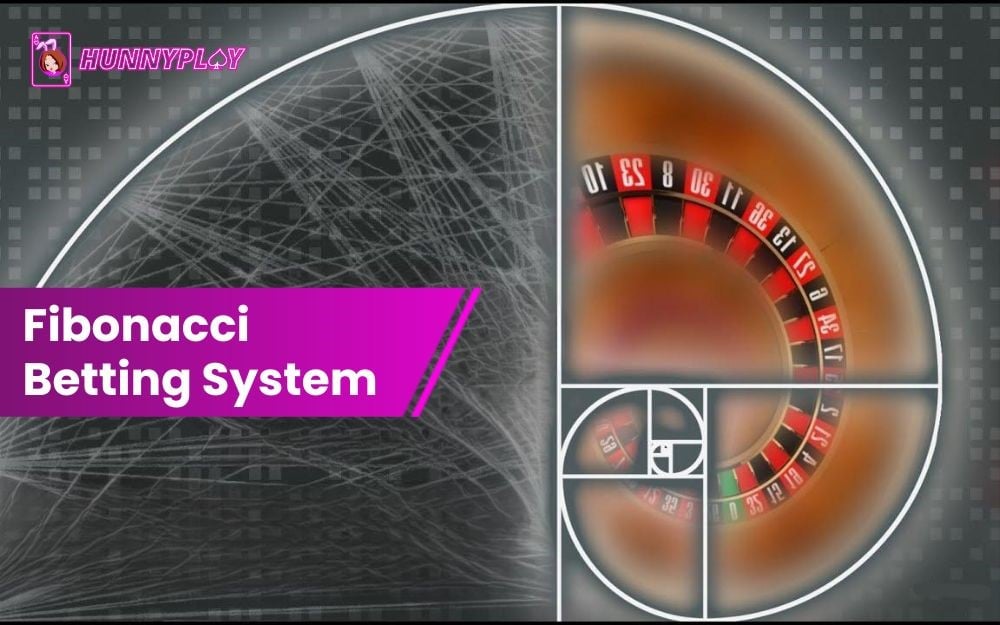Have you heard of the Fibonacci Betting System? This intriguing approach, inspired by the famous mathematical sequence. But is it truly the key to unlocking gambling success? In this detailed guide, HunnyPlay will delve deep into this math concept, including how it works, its pros and cons and whether it’s the right fit for your gameplay style.
What is the Fibonacci Betting System?
The formula of Fibonacci sequence
First, let’s learn about the Fibonacci sequence. This is an infinite sequence of natural numbers starting with two elements 0 or 1 and 1, the elements are then established according to the rule that each element is always equal to the sum of the two preceding elements.
The recurrence formula of the Fibonacci sequence is:
F(n) = F(n-1) + F(n-2)
Where:
- F(n) represents the nth number in the Fibonacci sequence.
- F(n-1) represents the (n-1)th number in the sequence (the number before F(n)).
- F(n-2) represents the (n-2)th number in the sequence (two numbers before F(n)).
This formula means that each number in the Fibonacci sequence is the sum of the two preceding numbers.
The base cases for the sequence are:
- F(0) = 0
- F(1) = 1
These base cases establish the starting point of the sequence, and then the recurrence formula takes over to generate the rest of the numbers.
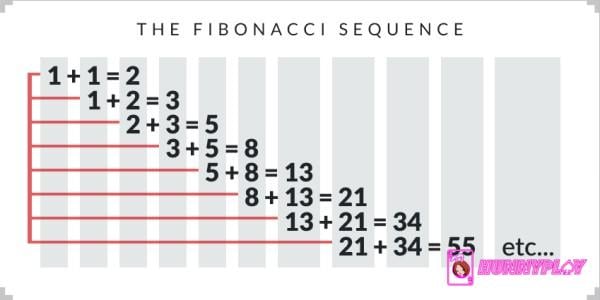
The Fibonacci sequence (Source: Sports Betting Dime)
The formula of Fibonacci sequence in gambling
The Fibonacci Betting System isn’t just a mathematical concept—it’s a strategic approach to gambling. At its core, this system uses a sequence of numbers (0, 1, 1, 2, 3, 5, 8, 13, 21, 34, 55, 89, 144, 233, 377, and so on.0, 1, 1, 2, 3, 5, 8…) to determine your bet sizes.
Each bet is the sum of the two previous ones. After a loss, you move up the sequence to increase your next bet. With a win, you move back two numbers, aiming to recoup losses and secure a profit.
This is a negative progression system, designed to recover from losing streaks.
The Fibonacci Betting System shines in games with a low house edge, like blackjack (around 2%) or sports bets with odds like -105 or -110. These wagers offer near 50/50 odds, making long losing streaks less likely.
The Fibonacci System doesn’t promise a win every time. The strategy aims to balance wins and losses, ensuring that your winnings ultimately outweigh your losses, even after a string of bad luck.
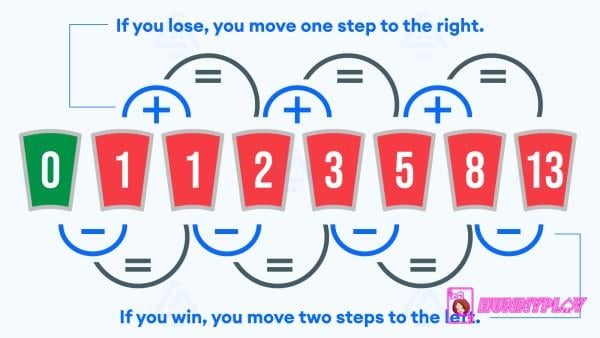
Betting principles according to the Fibonacci System (Source: Sports Betting Dime)
How does the Fibonacci System work?
The Fibonacci Betting System offers a unique approach to wagering. Unlike some systems that rely on doubling down after losses, the Fibonacci System takes a more nuanced approach.
The Fibonacci Betting System is all about adapting to the ebb and flow of wins and losses, ensuring you’re not chasing losses recklessly.
What’s fascinating about the Fibonacci sequence is that it’s infinite. This translates to a betting system with no hard stop. As long as you stay within the casino’s bet limits, you can ride the Fibonacci wave for as long as you choose.
It’s a system that offers both flexibility and a structured approach.
While the Fibonacci System doesn’t promise a foolproof path to riches, its strategic design is alluring. By carefully balancing bets after wins and losses, it aims to tip the scales in your favor.
Even if you don’t win every hand, the Fibonacci Betting System‘s goal is to ensure your winnings outpace your losses over time.
Fibonacci System example
Let’s see how the Fibonacci Betting System plays out in a few betting rounds:
Example #1: Climbing After a Loss
- Sequence: 0, 1, 1, 2
- Your bet: 3 units (1 + 2)
- Outcome: Loss
- New sequence: 0, 1, 1, 2, 3
- Next bet: 3 units (stay on the same number after a loss)
Example #2: Retreating with a Win
- Sequence: 0, 1, 1, 2, 3, 5
- Your bet: 8 units (3 + 5)
- Outcome: Win!
- New sequence: 0, 1, 1, 2 (move back two numbers)
- Next bet: 2 units
Example #3: Winning Big, Then Scaling Back
- Sequence: 0, 1, 1, 2, 3, 5, 8, 13, 21, 34
- Your bet: 55 units (21 + 34)
- Outcome: Win!
- New sequence: 0, 1, 1, 2, 3, 5, 8, 13 (back two steps again)
- Next bet: 13 units
These examples illustrate how the Fibonacci Betting System dynamically adjusts your bets based on wins and losses. It’s a strategic dance between aggression and caution, designed to maximize your chances of walking away with a profit.
While the previous examples give you a taste of the Fibonacci System, let’s dive deeper. We’ll use a table to show how the system might play out during a typical casino session, starting with a $5 minimum bet.
This way, you’ll get a clearer picture of the strategy in action.
| Bet/Sequence | Result | Profit/Loss |
| $5 (0, 1) | Win | $5 |
| $5 (0, 1) | Win | $10 |
| $5 (0, 1) | Loss | $5 |
| $10 (0, 1, 1) | Loss | -$5 |
| $15 (0, 1, 1, 2) | Loss | $20 |
| $25 (0, 1, 1, 2, 3) | Loss | -$45 |
| $40 (0, 1, 1, 2, 3, 5) | Win | -$5 |
| $15 (0, 1, 1, 2) | Win | $10 |
| $5 (0, 1) | Loss | $5 |
| $10 (0, 1, 1) | Win | $15 |
| $5 (0, 1, 1) | Win | $20 |
| $5 (0, 1) | Loss | $15 |
Fibonacci Betting System Pros and Cons
Pros
- Mitigation of large losses: Unlike systems like the Martingale, which involve doubling your bet after each loss, the Fibonacci System minimizes the risk of catastrophic losses, making it a safer option for players with limited bankrolls.
- Recovery oriented: The Fibonacci Betting System is specifically designed to help you recoup losses. By increasing your bet after each loss, it aims to win back previous amounts and potentially turn a profit.
- Profit potential: In many scenarios, especially with games that offer close to even odds, this system can lead to profitable sessions. This is because the gradual progression allows for smaller wins to offset previous losses.
- Engaging gameplay: The system adds an element of excitement and strategy to your gameplay. It’s more engaging than simply betting the same amount each time, as you constantly adjust your wagers based on the outcome of previous rounds.
- Versatility: The Fibonacci Betting System is not limited to a single game. Its principles can be applied to various casino games.
Cons
- Complexity: Compared to simpler strategies like the Martingale or D’Alembert, the Fibonacci System can be a bit more challenging. Players need to familiarize themselves with the sequence and the rules for adjusting bets.
- House edge: While the Fibonacci Betting System can help manage losses and potentially generate profits, it doesn’t eliminate the house edge. The casino still has a mathematical advantage in the long run, and no system can guarantee consistent wins.
- Potential for escalating losses: Even with the gradual progression, losses can still accumulate if you encounter a long losing streak. This can put a strain on your bankroll and lead to bigger losses than initially anticipated.
- No clear stopping point: Unlike systems like the Labouchere, which have a defined target and ending point, the Fibonacci System doesn’t offer a clear indication of when to stop. This can make it difficult for players to determine when to walk away, potentially leading to overplaying.
- Bankroll requirements: To effectively use the Fibonacci Betting System and withstand potential losses, players need a larger bankroll than they might for simpler systems. This can be a barrier for those with limited funds.
Application of Fibonacci System in popular games
In Roulette
Roulette, with its trio of even-money bets (high/low, odd/even, red/black), is a prime candidate for applying the Fibonacci Betting System. Each of these bets offers nearly a 50/50 chance of winning, aligning well with the system’s approach to recovering losses and accumulating profits.
The Fibonacci dance in roulette works by moving down the sequence (decreasing your bet) after a win and moving up the sequence (increasing your bet) after a loss. This dynamic strategy aims to offset losses and capitalize on winning streaks.
Remember, not all roulette tables are created equal. European and French roulette offer a lower house edge (2.7% and 1.35% respectively) compared to American roulette’s 5.26%. This means you have a slightly better chance of winning in the long run on European or French wheels.
When implementing the Fibonacci Roulette System, consider your bankroll and choose a table that suits your budget. The lower house edge of European or French roulette will give you a better shot at maximizing your potential profits while using this intriguing strategy.
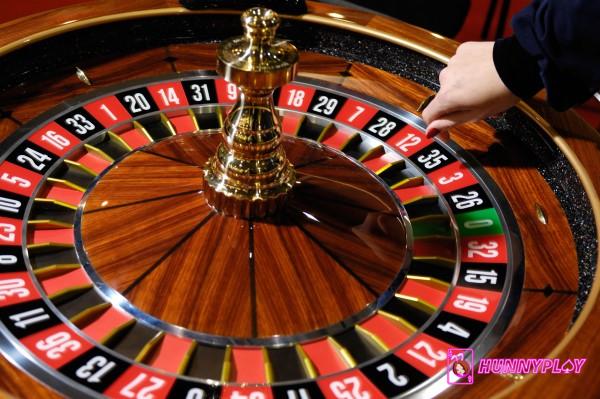
Roulette is a suitable game to apply the Fibonacci Betting System (Source: Internet)
In Blackjack
Blackjack, with its win-or-lose outcomes, aligns seamlessly with the Fibonacci Betting System. While doubling down and splitting can introduce complexity, the system can still be applied effectively by following a few simple adjustments:
- Losing Hands: After a loss, simply double your previous bet, following the Fibonacci sequence progression.
- Winning Hands: Upon winning a hand, reset the sequence back to the beginning (0, 1). This helps you lock in profits and start fresh.
Let’s see this in action:
- You bet 3 units (0, 1, 1, 2)
- You double down, putting 6 units in play
- The hand loses
- Your next bet becomes 12 units (doubling the previous 6)
- If you win this bet, you reset and start again with 1 unit.
This adaptability makes the Fibonacci Betting System a powerful tool in Blackjack. It helps mitigate losses, capitalize on wins, and add an extra layer of strategy to your gameplay. Remember, the goal isn’t to win every hand, but to ensure your overall winnings outweigh your losses in the long run.
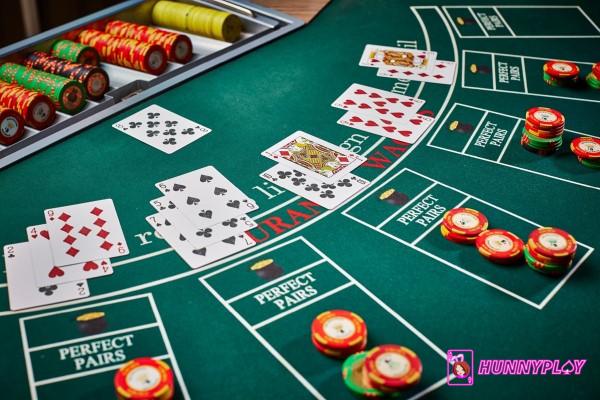
With its win-or-lose outcomes, Blackjack aligns seamlessly with the Fibonacci Betting System. (Source: Internet)
In others games
The Fibonacci Betting System isn’t confined to just blackjack and roulette. Its versatility extends to a variety of other casino games that offer even-money or near even-money bets:
- Baccarat: Betting on either the Banker or Player in Baccarat presents near even-money opportunities. While the Banker bet has a slightly lower house edge (1.06%), both options are suitable for implementing the Fibonacci System.
- Craps: This dice game offers several even-money bets, including the Pass Line, Don’t Pass Line, Come, and Don’t Come. The Don’t Pass Line and Don’t Come bets have the lowest house edge (1.36%), making them particularly attractive for Fibonacci players.
- Pai Gow Poker: Winning hands in Pai Gow Poker typically pay 0.95:1, which is close enough to even money for the Fibonacci System to function effectively. The game’s probabilities suggest a roughly 50% win rate, excluding ties, making it a good fit for this strategy.
- Video Poker: Games like Jacks or Better, when played with optimal strategy, offer a win rate exceeding 45%. This consistent winning potential makes video poker another excellent candidate for the Fibonacci System.
Remember, the Fibonacci Betting System isn’t a magic bullet. It requires discipline, a suitable bankroll, and a clear understanding of the game you’re playing. But when applied wisely, it can be a valuable tool for managing risk and potentially increasing your profits in various casino games.

Other gambling such as Baccarat can also apply the strategies of The Fibonacci System (Source: Internet)
Expert tips for using the Fibonacci Betting System
Ready to test your Fibonacci Betting System skills at the tables? Follow these expert tips to enhance your strategy and boost your chances of success:
- Hunt for low House edges: Choose games with the smallest house advantage. For instance, opt for European or French roulette over the American version due to their lower edge (2.70% and 1.35%, respectively, compared to 5.26%). Combining Fibonacci with a lower house edge stacks the odds in your favor.
- Start small, stay nimble: Begin with the lowest stakes possible. This allows you to weather losing streaks without hitting the table limit and prevents large losses. Online casinos often offer $1 minimum bets, making them ideal for testing the Fibonacci waters.
- Manage expectations: Remember, no system is infallible. The Fibonacci System can be highly effective, but it’s not a guaranteed win every time. Be prepared for potential losses and understand the risks involved before you start.
- Leverage bonuses: Online casinos frequently offer bonuses that include table games like blackjack and baccarat. Take advantage of these promotions to stretch your bankroll and potentially amplify your Fibonacci winnings.
- Cash out smartly: The Fibonacci Betting System often leads to profitable sessions. However, if luck turns sour, losses can accumulate. To avoid giving back your hard-earned winnings, set a profit target and cash out when you reach it.
By implementing these expert tips, you can approach the Fibonacci Betting System with confidence and savvy. Remember, responsible gambling is key, so always play within your means and enjoy the strategic excitement that Fibonacci brings to the table.
Fibonacci System FAQs
Q: What is the Fibonacci Betting System and how does it work in casino games?
A: The Fibonacci Betting System is a negative progression betting strategy. It’s based on the Fibonacci sequence (0, 1, 1, 2, 3, 5, 8…), where each number is the sum of the two preceding ones. After a loss, you move up the sequence to determine your next bet, and after a win, you move down two numbers. The goal is to recoup losses and make a small profit.
Q: Is the Fibonacci Betting System effective for winning in casino games?
A: While the Fibonacci System can help manage losses and potentially recover them over time, it doesn’t guarantee wins. Like all betting systems, it’s subject to the house edge and variance. It’s essential to set a budget and stick to it, as losses can escalate quickly. The Fibonacci Betting System is more about bankroll management than a surefire winning strategy.
Q: Which casino games are most suitable for using the Fibonacci Betting System?
A: The Fibonacci Betting System is best suited for even-money bets in games like roulette (red/black, odd/even) or baccarat (player/banker). It’s not ideal for games with higher volatility or complex betting options. Some players also adapt it to blackjack, but it requires adjustments due to the game’s different rules.
Conclusion
The Fibonacci Betting System is a nuanced strategy that requires careful consideration and bankroll management. It offers a potential path to recovering losses, but no guarantee of winning. Discover more about casino betting systems and other exciting games at HunnyPlay. Remember, responsible gaming is key – set limits and enjoy the thrill responsibly.





















